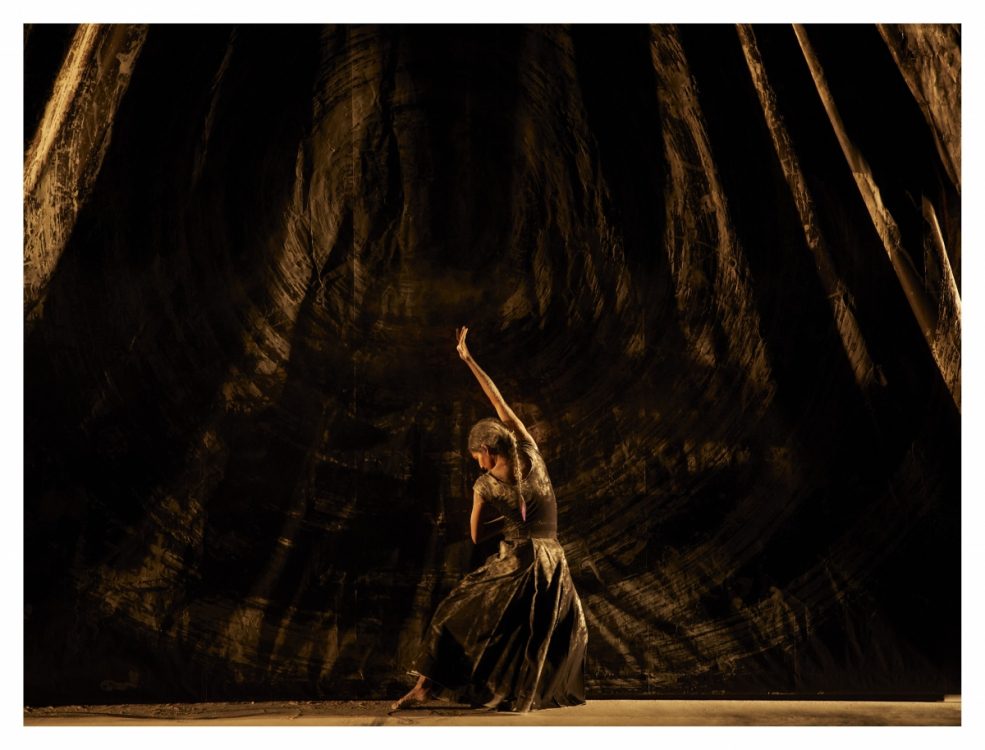Aurélien Bory’s aSH is the final opus in his trilogy of large-scale solos for unique female dancers. It began in 2008 with Questcequetudeviens? It was followed by Plexus in 2012. In this trilogy, according to him the starting point not space is a woman, a person with a story; a living being who unfolds through dance.
Indian dancer Shantala Shivalingappa is a lonely yet imposing presence. Her movements are based on classical Kuchipudi dance, a tightly controlled form, originally performed by men. Choreographed by Shivalingappa herself, aSH explores aspects of Shiva, the all-power Hindu god of creation and destruction. Lord of cremation grounds, he covers his body with ashes.
Composed, her long arms stretched into precision-cut angles, her movement purposeful and ethereal. A vast sheet of thick metallic paper hangs behind her, the scene coloured a shadowy bronze. The great hanging begins to billow like a ship’s sails gently like the monsoon breezing in. Gradually it turns into a storm, an orogenesis – the earth splits and land emerges and collapses – and the circle starts again. Yet, it’s entirely possible to believe that Shivalingappa is silently controlling the forces around her.
The composure of her movements reveals a Shiva in control. The ease and the elegance of her movements showcase her abilities as a dancer. A dancer at the peak of her career, fully aware of both her heritage and her abilities treating you the spectator to an arresting piece of dancing. You will find yourself drawn in and pondering the never ending circle of life, death and rebirth. How we are simply the spectators of a divine force creative, destructive and pitiless.
Shivalingappa draws circles with a giant brush, then scatters ash across the surface, tracing rings and curves in the dust with her feet. An ashen vortex is gradually revealed a story of constant transformation, of destruction and creation. It becomes the focal point Of the otherwise dark and silent amphitheatre with the dancer in bas relief.
Composer and percussionist Loïc Schild and the automatic rhythms of Joan Cambon dress the piece and complement the dancer’s movements. The slow and rhythmic percussionss gradually reach an intense and bellicose crescendo accompanying an absorbing piece of life, death and rebirth.

